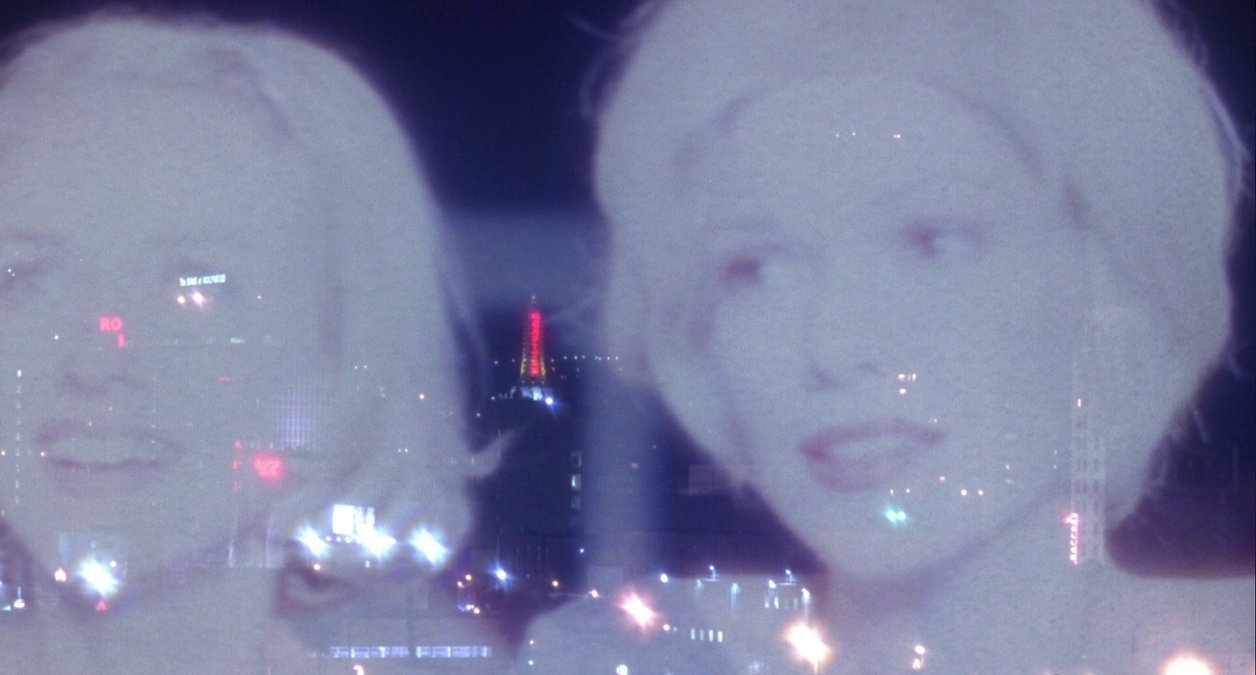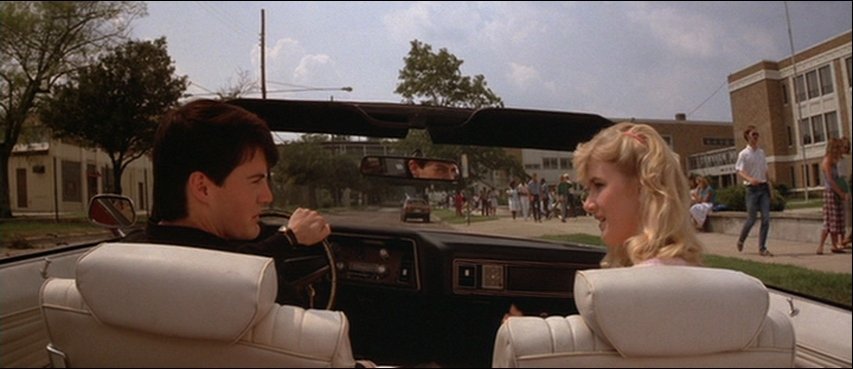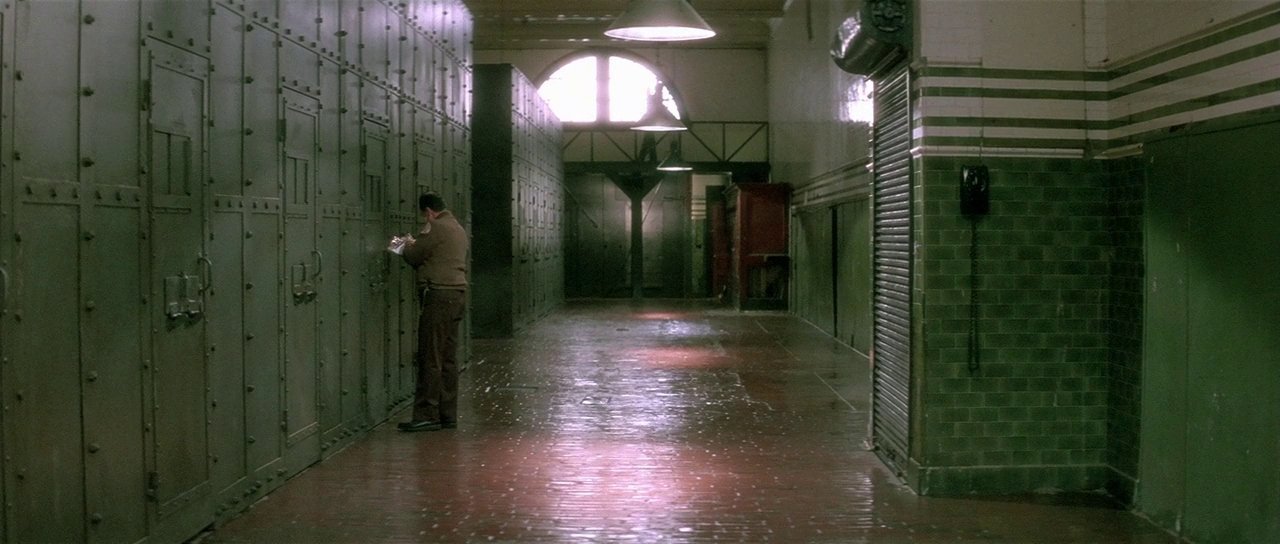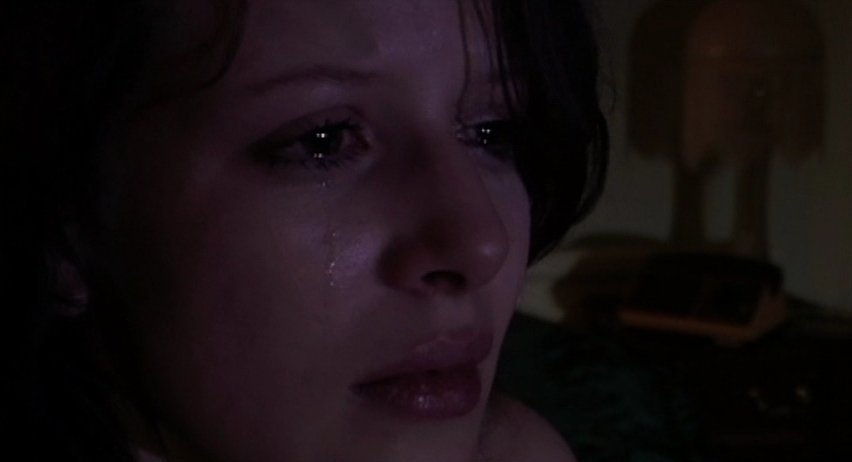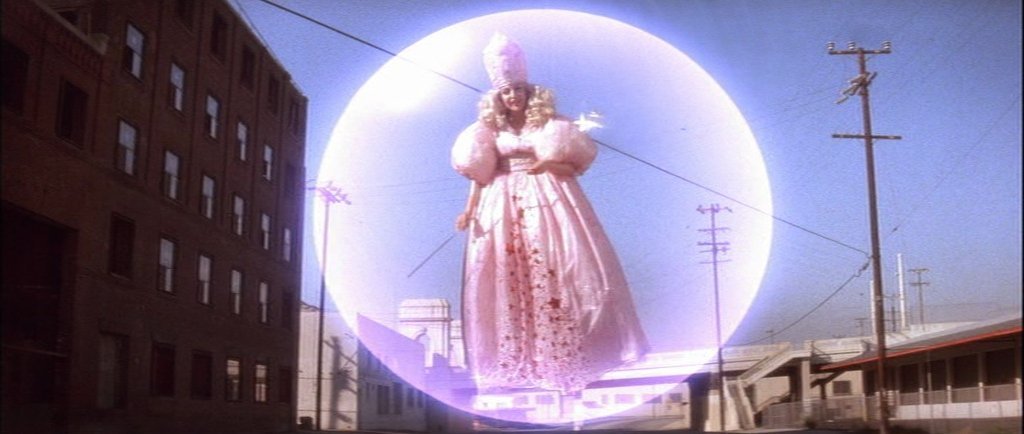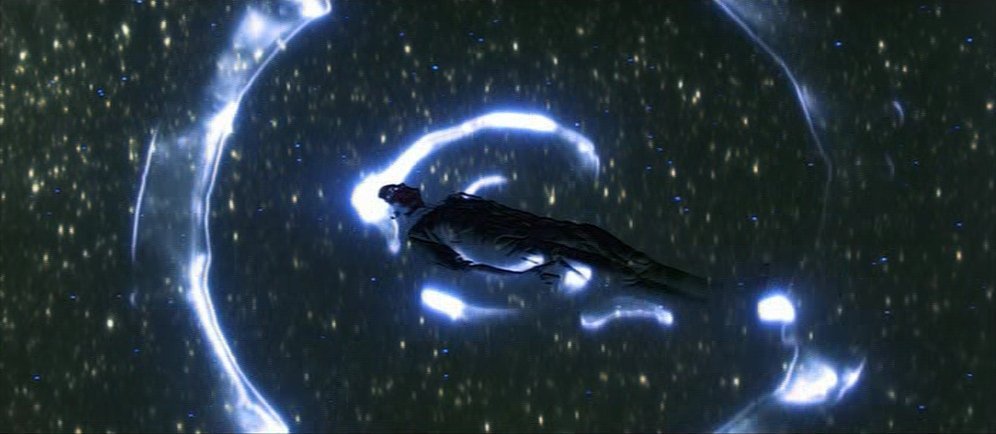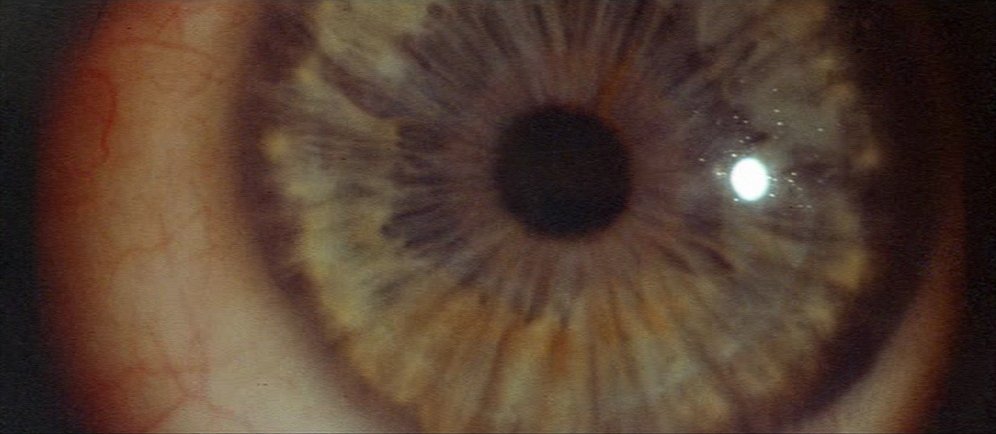Dream Logic in the Real World: When Life Feels Like a Lynch Film
A few days ago, David Lynch died. It felt like losing a distant, yet deeply familiar, relative — an artist whose work possessed an uncanny understanding of my own internal landscape. While many creators build worlds for us to escape into, Lynch’s genius resided in his ability to reveal a world that had always pulsed beneath the surface of our own, a dimension most of us are conditioned to ignore. He meticulously peeled back the mundane skin of reality to expose the strange, electrical hum of the subconscious, giving form to the dream logic we all experience yet seldom acknowledge.
His films never registered as simple fiction. They functioned as a distorted mirror, angled to capture the unsettling essence of our intuitive feelings rather than a literal reflection. The absurd, circular conversations, the unnervingly prolonged stares from strangers, the way a familiar room can abruptly become charged with a sinister stillness. These were not cinematic inventions to me. They were textures of life as I had always perceived it. Lynch provided the vocabulary and the visual grammar for sensations I had previously lacked the courage, or perhaps the framework, to articulate.
There are moments in ordinary existence that seem to tear at their seams, illuminating a glimpse of a different order underneath. These are full-bodied, immersive experiences that operate outside conventional logic. They unfold with a deliberate, almost ceremonial slowness, often bathed in the sickly fluorescence of a 3 a.m. diner or the oppressive silence of a suburban lawn at dusk. Every gesture feels weighted with portent; every exchanged word seems to contain a hidden, encrypted message. These are the instances that leave you questioning the very fabric of your day-to-day life, wondering if you have accidentally slipped into a waking dream or if reality itself has momentarily malfunctioned, revealing the eerie machinery behind the stage.
Mulholland Drive (2001)
The Geometry of Unease
The first indication that reality has slipped its moorings is almost always spatial. The world ceases to be a passive backdrop and begins to perform. You enter a room where the furniture arranges itself with near-mathematical symmetry, where the lighting falls with theatrical starkness, and where silence hangs in the air, thick and charged with potential. An artificial quality pervades, as if you have stepped onto a meticulously dressed set that has forgotten the warmth of genuine habitation.
The hushed opulence of a luxury boutique five minutes before closing feels empty except for a watchful sales assistant and the faintest scent of leather and jasmine. The shoes gleam too perfectly, the handbags rest in their illuminated glass cases like relics of an ancient religion. A lone customer lingers, slowly trailing a hand over a velvet display with an expression of inscrutable intent. The sensation is one of having interrupted a scene poised on the brink of a significant event — an event that never arrives. In this environment, the stillness itself becomes the main protagonist.
This is the geometry of unease, a principle David Lynch understood with intuitive mastery. His spaces transcend their function as mere locations, evolving into active psychological landscapes. He presents the unnerving perfection of a diner where the coffee is always fresh, yet the waitress’s smile holds for a fraction of a second too long. He conjures a hallway that appears to elongate beyond physical possibility, or a nightclub bathed in crimson light where patrons sway in a collective, dreamlike trance. Lynch rendered the familiar unsettling through a mathematical manipulation of space, sound, and time.
I have found that real life often operates on this same unsettling principle. Certain places feel overly composed, as though constructed and waiting for a catalyst beyond ordinary human interaction to spring them to life. I recall a private fashion viewing in Paris, an exclusive gathering within a grand apartment boasting impossibly high ceilings and glittering antique chandeliers. Every element was arranged with absolute intention — mannequins positioned like frozen spectres, champagne flutes balanced on trays that defied gravity, the murmur of polite conversation forever hovering below a natural crescendo. Underneath this impeccable surface, a stillness reigned, a sense that if one stared too intently, the very edges of the room might peel back to reveal an entirely different set beneath.
The world is full of spaces designed to evoke specific feelings. Palatial hotels and exclusive clubs are engineered to make one feel powerful, while art galleries cultivate an expensive, reverent silence. Another category of space, however, exists to lull its occupants into a state of gentle unreality, making them question whether they are actors in a scene directed by an unseen hand. Monaco, which I visit frequently, is a principality built upon this very dream logic. Its glamour is so polished, so absolute, that it can feel less like a geographical location and more like a flawless simulation. The yachts in the harbour, the plush green baize of the casino tables, the mirrored elevators that offer a subtly distorted reflection. The entire city-state exists in a state of suspended, artificial elegance, a perpetual film set for a narrative that never reaches its final cut.
The true markers of a Lynchian space extend beyond the aesthetic into the behavioural. It manifests in the way people act, as though bound by a set of invisible, unspoken rules. Have you ever found yourself in a hotel lobby at an hour when it should be deserted, only to discover a lone figure? A man in a suit, sipping an untouched drink, his gaze fixed on a point just beyond you as if awaiting a signal only he is equipped to receive. Or a restaurant where the patrons converse in eerily hushed tones, their movements appearing strangely choreographed. The feeling is one of dissonance, a certainty that something is amiss, even if the reason remains stubbornly elusive.
A few weeks ago, I walked into a near-empty bar in Tokyo long after midnight, a place so concealed that discovering it felt like stumbling into an alternate dimension. The bartender offered a polite nod, preparing a drink as if I had ordered it in a language neither of us consciously understood. A jazz record crackled softly, its sound muffled by the deep red walls. At the far end of the room, an older man sat motionless, staring into his glass. I felt no sense of threat, only the distinct impression that I had intruded upon a moment with its own independent existence — a moment that had preceded my arrival and would continue, utterly unchanged, long after my departure.
Lynch’s films train us to perceive these instances not as random anomalies, but as deliberate clues. They are signs pointing toward the inherent instability of the reality we take for granted. His characters often find themselves trapped within environments that seem to breathe and watch, locations guarding secrets they can sense but never fully decipher. This, perhaps, is the ultimate lesson. We expend considerable energy forcing the uncanny into neat, logical boxes, forgetting that a significant portion of life exists just beyond the edge of comprehension.
Therefore, the next time you step into a space and feel that initial flicker of unease resist the urge to dismiss it. Do not look away. There is meaning to be found in the stillness, in the perfectly aligned furniture, in the way light casts shadows that feel almost intentional. It is a performance. And whether you are aware of it or not, you have just been cast in a role.
Blue Velvet (1986)
Characters Without Context
Lynch’s cinematic universe is populated by figures who feel at once recognisable and profoundly alien. They inhabit the same physical space as the protagonist, yet their speech and movement suggest they are governed by an entirely separate set of physical and social laws. Their presence is never accidental; they do not simply occupy the frame so much as intrude upon it, seeming to arrive from a parallel narrative to which the audience will never be granted access. These are individuals you encounter in the real world, too — those whose brief appearance leaves a lasting, inexplicable imprint.
The essence of a Lynchian figure rests in their strange deliberateness. They become unsettling precisely because they refuse to acknowledge the basic conventions of social engagement. These characters exist out of sync with the flow of time, the logic of space, and the protagonist’s own understanding of reality. Their abnormality is a fundamental condition of their being.
Consider the Cowboy from Mulholland Drive, who materialises in a shadowy corridor to deliver a cryptic monologue on attitude and choice. His demeanour is calm, his delivery methodical, yet his very presence feels intrinsically wrong. He feels wrong because he operates on a separate temporal and emotional frequency, a dissonance more unsettling than any overt threat. His declaration, “You’ll see me one more time if you do good. You’ll see me two more times if you do bad,” functions neither as a threat nor a promise. It is a simple statement of fact, delivered with a quiet authority that positions him as a mere messenger for a larger, incomprehensible system.
This contrasts with the manic energy of Twin Peaks’ The Man from Another Place. He speaks in riddles and moves with an unnatural syncopation, his words often reversed and reassembled into something vaguely recognisable yet deeply alien. He declaims, treating those around him as participants in a preordained script they have not read. In Lynch’s world, there is no room for small talk. Every character who steps into the light appears to have rehearsed their lines in another dimension, and they will deliver them regardless of anyone’s readiness to listen.
These figures operate without the need for context, logic, or coherent backstory. Their existence is self-justifying. They appear, impart their message — or simply their aura — and then vanish, often without explanation or narrative resolution. In Lost Highway, the chilling Mystery Man confronts the protagonist at a party, insisting they have met before despite the impossibility of the claim. He then demonstrates his omnipresence by answering the protagonist’s home telephone from the party itself. The encounter is brief, unprovoked, and deeply destabilising. This knowledge descends upon the protagonist unbidden, an unwelcome revelation that tears a hole in the fabric of his reality.
The power of characters without context stems from their ability to impose themselves upon the story rather than fitting neatly within its confines. Unlike conventional antagonists or supporting players, they do not serve the protagonist’s journey or function to advance the plot in a linear fashion. They are interruptions — glitches in the narrative matrix that hint at a deeper, more chaotic truth lying just beneath the surface of ordered existence.
In our own lives, these archetypes manifest in fleeting, unexpected encounters: the stranger on a night bus who offers a sentence heavy with unintended prophecy, the figure across a crowded room who watches with an intensity that feels personally significant, the individual who moves through a familiar space as if bound by a different gravity. Lynch possessed a unique understanding that what truly unnerves us is not always what is overtly threatening, but what steadfastly resists all our attempts at rational explanation. These characters remind us that the world is filled with agents of the inexplicable, and that the most enduring mysteries are often the ones that refuse to be solved.
The Elephant Man (1980)
Conversations That Almost Make Sense
The dialogue in David Lynch's films occupies a unique space between logic and dream. His characters communicate through statements that possess the structure of coherent language yet dangle just beyond the realm of rational comprehension. They speak in riddles and half-formed truths, their sentences feeling like imperfect translations from a language we were never intended to understand. These exchanges are never pure nonsense; they hover at the edge of meaning, tantalisingly close to revelation, much like the frustrating yet vivid memory of a dream upon waking. This unsettling quality of speech, one discovers, also permeates certain real-world encounters.
There are moments when a person offers a statement that seems to verge on a significant disclosure. One feels that with a single additional sentence, a mere clarification, everything would become clear. Yet this resolution never materialises. A stranger at a gallery opening might lean in and confide, in a tone heavy with unearned intimacy, “You're earlier than I expected, but also right on time." A concierge, when asked about room availability, might simply reply, “That is a question for the night itself." These statements carry a subtle warp, a slight deviation from the expected that proves deeply disquieting. Their meaning remains perpetually out of reach, inviting an interpretive chase with the certain knowledge that the quarry will never be caught.
This structure defines Lynchian speech. Words are deployed to imply a greater significance while steadfastly refusing to provide resolution. Twin Peaks offers a masterclass in this technique. The Log Lady dispenses wisdom that feels deeply intuitive yet completely illogical, such as her assertion, “The owls are not what they seem." Similarly, Leland Palmer's grief finds expression in a manic performance of “Mairzy Doats," his face contorted into an expression that exists in the unsettling territory between ecstasy and utter desolation. These function as verbal illusions, sentences crafted to sound definitive that ultimately dissolve into ambiguity upon contact.
Perhaps the most iconic example of this occurs in the diner scene from Mulholland Drive. A man describes a recurring nightmare to his companion with meticulous, hesitant detail, his tone suggesting a private certainty even as the logic escapes the listener. He speaks of a monstrous figure lurking behind the very establishment they are in. The terrifying power of the scene erupts when he ventures outside to confront his fear and the entity is indeed there, materialised exactly as described. The conversation has led to a concrete manifestation, yet this answer only serves to deepen the fundamental mystery, proving that some truths are more terrifying when made visible.
Lynchian dialogue unnerves because it mirrors the way speech operates in dreams — grammatically correct yet emotionally and logically askew. The cadence feels alien, either too measured or too frantic. Pauses stretch into voids, and responses seem tailored for a different conversation altogether. In Lost Highway, the Mystery Man disarms the protagonist not with a threat, but with an impossible statement of fact: “We've met before, haven't we?... At your house. As a matter of fact, I'm there right now." The terror stems from the character's absolute, unshakeable certainty, a quality that bypasses rational argument and strikes directly at the subconscious.
Lynch demonstrates that communication is as much about rhythm, tone, and the subversion of expectation as it is about literal meaning. In Eraserhead, the Lady in the Radiator sings a haunting, lullaby-like refrain: “In Heaven, everything is fine." The delivery is sweet, the melody simple, yet the words are a hollow comfort. The phrase lingers precisely because it promises a solace it cannot logically deliver, playing on our deep-seated need for meaning where none may exist.
In daily life, we routinely dismiss these discursive oddities, attributing them to conversational quirks or our own inattention. Lynch's genius is to magnify and isolate them, compelling us to truly listen. He denies us the comfort of dismissal, forcing us to inhabit the discomfort of language that has slipped its semantic moorings.
Therefore, when confronted with a statement that almost makes sense — one that feels significant yet defiantly obscure — the instruction is to pause and listen closely. It may indeed be nothing. Alternatively, it may be a faint signal, a key whispering from behind the veil of the ordinary, hinting at a larger, unseen architecture waiting just beyond perception.
Mulholland Drive (2001)
Hyperreality and the Illusion of Control
Certain environments feel unnervingly pristine, curated to such an extreme degree that they begin to destabilise one's perception of the real. Luxury spaces frequently possess this uncanny quality, their absolute perfection creating a subtle erosion of tangible reality.
London offers a compelling case study in this phenomenon. The city's private members' clubs, with their deep velvet armchairs and silently observant staff, project an aura of exclusive calm. High-end boutiques display their wares with museum-like precision, each handbag positioned as a sacred artefact untouched by human hands. Glass-walled penthouses frame the urban landscape as a mere aesthetic composition. Every element in these spaces is arranged with absolute intention, creating environments so smooth and controlled they feel like edited versions of reality, polished for maximum appeal yet devoid of authentic life.
This artificial perfection carries a distinctly Lynchian quality. David Lynch's films consistently explore the eeriness of environments that feel excessively true to their intended archetype. Mulholland Drive presents Los Angeles as both glittering dreamscape and underlying nightmare, a city where the performance of glamour becomes so convincing it transforms into something sinister. The film's glamorous parties, immaculate Hollywood homes, and meticulously staged displays of success all appear poised on the precipice of collapse. They demonstrate how control, when pushed to its absolute limit, becomes a fragile illusion — and the moment that illusion fractures, reality undergoes a terrifying transformation.
London thrives on its own carefully maintained illusions. In establishments across Chelsea and Mayfair, one might encounter lighting so perfectly calibrated and conversation so artfully modulated that temporal perception itself becomes distorted. A glance toward a neighbouring table might reveal a face that seems eerily familiar, not through personal acquaintance but through a deeper, more disquieting sense of recognition — as if observing a character from a recurring scene in a play one has never consciously attended. At a sophisticated dinner party, guests can appear to be performing predefined roles, their laughter hitting precise cues and their dialogue flowing with a curated elegance that suggests an invisible script.
Lynch possessed a unique talent for amplifying this sensation. He understood that control represents an inherently fragile construct. The more vehemently a space asserts its perfection, the more likely it becomes to reveal its inherent flaws. The Red Room in Twin Peaks exemplifies this principle. With its severe symmetry, impossibly polished floors, and dramatic crimson curtains, it should feel elegant. Instead, its unsettling nature emerges from the disjointed movement of its inhabitants, their stilted speech, and the room's subtle spatial manipulations. It is a space that mimics control while being governed by forces entirely beyond human comprehension.
Luxury environments often exhibit this same unsettling duality. They present themselves as bastions of effortless order where nothing exists out of place. Yet perfection, when examined too closely, invariably reveals its uncanny nature. The hushed corridors of a five-star hotel in the early hours, where the stillness feels manufactured and absolute. Or the showroom of a high-end automotive dealer, where vehicles gleam under perfect lighting in a state of perpetual, capitalist stasis. A penthouse with a commanding view can reduce the vibrant city below to a static painting, beautiful yet utterly disconnected from the messy reality of urban life.
Lynch's characters frequently experience a complete loss of agency within these hyperreal settings. They enter spaces that seem familiar, only to discover the normal rules no longer apply. In Lost Highway, the protagonist navigates a home that appears to reconfigure itself, where time splinters and personal identity dissolves. In Inland Empire, a Hollywood actress becomes trapped in a shifting reality that loops and distorts like damaged film, completely beyond her influence or understanding.
This represents the true horror of hyperreality. The true horror emerges from the realisation that you are alienated from this artificial world, with no place left within it. The illusion of personal control evaporates first. Once that foundational belief shatters, all that remains is the deeply unsettling awareness that you have become a guest in a narrative where your role was decided long before you arrived.
Twin Peaks (1990-1991)
Expanding the Lynchian Lens
While David Lynch's work represents a masterclass in the uncanny, he operates within a rich artistic and philosophical lineage. His vision connects to a broader tradition of storytellers and thinkers who recognise that true disquiet often resides not in the grotesque, but in the subtly, persistently off-kilter.
Franz Kafka’s The Trial stands as a clear literary precursor to Lynch’s universe. Josef K. is ensnared by an opaque bureaucratic system for a crime that remains eternally undefined, forced to navigate a labyrinth devoid of logic or escape. This existential predicament mirrors the plight of Lynchian protagonists. In Lost Highway, reality itself becomes malleable, transforming the protagonist's identity into an unsolvable riddle. Similarly, Mulholland Drive begins with a recognisable Hollywood narrative that progressively fragments into a dreamscape of unresolved horror, leaving both character and audience in a state of profound disorientation.
Jorge Luis Borges presents another perspective on this reality distortion. His literary labyrinths and recursive structures echo Lynch’s fascination with ontological loops — narratives that fold in on themselves and spaces that defy conventional physics. Borges’ The Library of Babel, an infinite archive containing every possible book yet offering little comprehension, finds its cinematic parallel in Lynch’s Inland Empire. Here, the medium of film itself becomes a labyrinth, layering multiple, unstable realities until the protagonist, and by extension the viewer, loses all bearing on a fixed truth. Characters become trapped in recursive versions of their own stories, much like Borges’ librarians lost in a universe of potentially meaningless texts.
This tradition of cultivated unease continues in contemporary cinema. Filmmakers like Yorgos Lanthimos, in works such as The Lobster and The Killing of a Sacred Deer, construct worlds governed by a logic slightly yet decisively removed from our own. His characters speak with a stilted, robotic detachment, their emotions either suppressed or grotesquely exaggerated, their destinies shaped by arbitrary, incomprehensible rules. Lanthimos, much like Lynch, crafts a reality that is recognisable yet fundamentally alien, where human behaviour feels performative and authentic meaning remains perpetually elusive.
Beyond literature and film, Lynch’s aesthetic finds a powerful framework in psychoanalysis. Sigmund Freud’s concept of das Unheimliche — the uncanny — is central to understanding his work. The uncanny describes the familiar made strange: a face that is almost, but not quite, human; a doppelgänger where none should exist; a repeated phrase warped into a sinister incantation. Lynch builds entire sequences on this principle. The Red Room in Twin Peaks, where human movement becomes unnaturally stylised, or the exaggerated, deliberate politeness in Blue Velvet feels more threatening than any overt aggression. The terror emerges from the slight, almost imperceptible warp in the ordinary.
Carl Jung’s theories provide another interpretive key. His exploration of archetypes and the collective unconscious helps explain the potent, universal resonance of Lynch’s recurring motifs such as the shadowy figure, the radiant yet terrifying mother, the flickering portal between worlds. These symbols possess a universal quality, seeming to originate from a collective, primal source that triggers a deep, often pre-verbal recognition in the viewer.
To experience a Lynch film is to enter a collective dream, one shaped by literary nightmares, philosophical conundrums, and psychological archetypes. For all its surrealism, his world never feels entirely alien. It evokes the unsettling familiarity of a half-remembered dream or the shape of a deep-seated anxiety. This is the source of his work’s enduring power. Like Kafka, Borges, and the great surrealists before him, Lynch understands that the most potent terror stems from the haunting sensation of the almost-known, a truth that flickers just beyond the edge of comprehension.
The Lingering Sensation
Lynchian moments rarely announce themselves with dramatic emphasis; they unfold with a quiet insistence, settling into the subconscious like a persistent, half-heard whisper. Their power derives from a refusal to conform to logical explanation, residing instead in a realm governed by intuition and sensory impression.
The texture of everyday reality often mirrors the unsettling quality of Lynch’s films. Our world is punctuated by encounters that hover in the ambiguous space between the dreamlike and the disturbing, and by locations that seem to hold their breath in anticipation of some unnameable event. This parallel suggests a fundamental truth about existence, one that Lynch’s art captures with unparalleled clarity. Life, in its essence, is less concerned with providing answers than with presenting enduring questions. It is the unresolved note hanging in the air, the persistent feeling of a presence just beyond our peripheral vision — something immense, watching, waiting, and whispering from the shadows.
David Lynch’s work never required explicit explanation to achieve a deep and resonant understanding. It communicated in a primal language that bypassed intellectual reasoning, speaking directly to something we feel in our bones. He was a true visionary who masterfully revealed the strangeness hidden within the familiar, and in doing so, made the profoundly strange feel unsettlingly close to home. Rest in peace.
Lost Highway (2004)
Inland Empire (2006)
Wild at Heart (1990) & Dune (1984)
S xoxo
Written at Courchevel, France
18th January 2025

